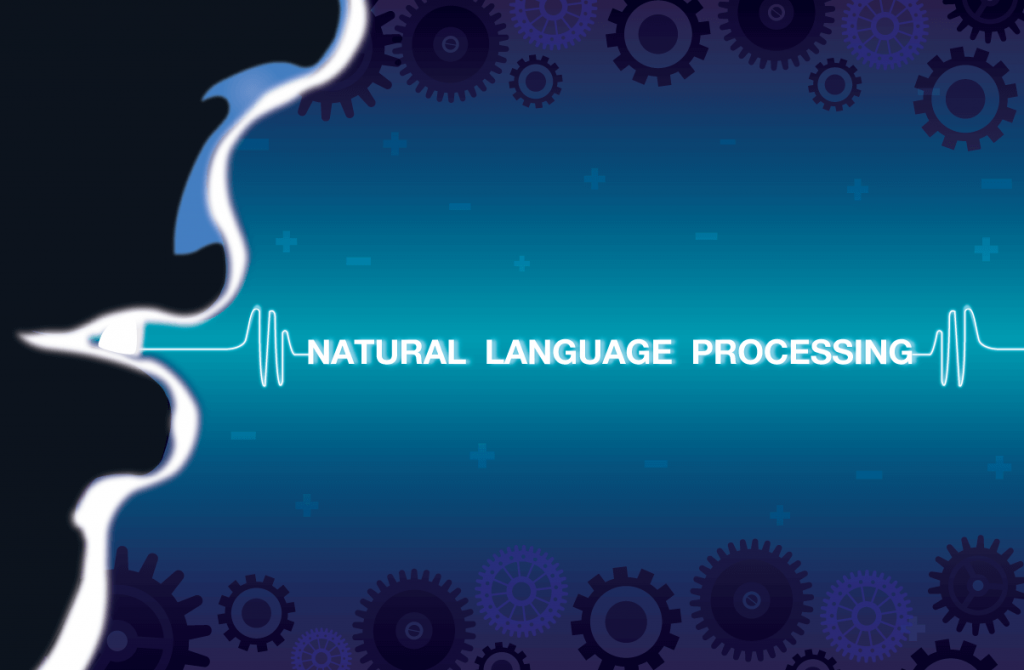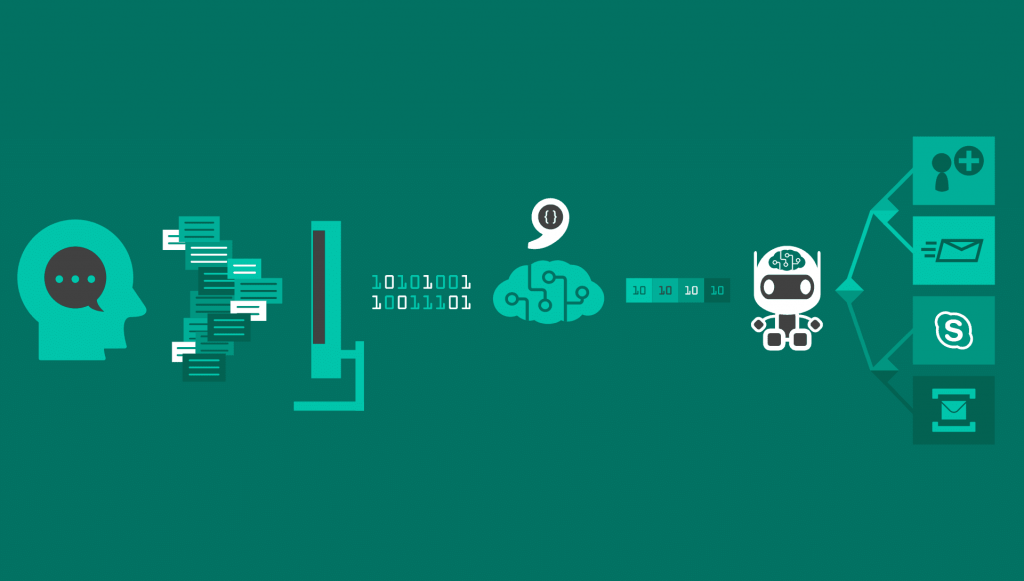What is NLP?
he foundation of NLP lies in statistical models and machine learning algorithms such as recurrent neural networks (RNNs), convolutional neural networks (CNNs), Transformer models, and others. These models are trained on large datasets of textual data to perform various natural language-related tasks.
Let’s consider an example of how natural language processing is used in practice to solve the task of automatic text classification. Suppose you have a set of news articles that need to be categorized into topics such as sports, politics, technology, etc. You want to delegate this process to a computer. By using NLP methods, you can create a machine learning model that learns on a labeled dataset to extract features from texts (specific words, names, etc.) and associate them with corresponding categories. It is then used to classify new documents. For instance, if users can independently publish news on a website, such a model will automatically determine the category of each text and prevent the publication of an article with prohibited information.

What tasks are solved with NLP?
Our language is full of ambiguities. We naturally perceive them: all these metaphors, homonyms, sarcasm, and irony. But try explaining to a computer why the phrase “I’ve always dreamed of digging potatoes in the rain” doesn’t actually mean that the author dreamed about it. People spend years learning a foreign language to the level of a native speaker. A program must cope much faster.
Therefore, some NLP tasks are aimed at helping the computer better understand the text. Among them:
- Speech recognition — converting oral speech into textual data, required for any application that processes voice commands. People speak differently: someone is in a hurry, someone stresses incorrectly. Therefore, AI is trained on large diverse datasets to provide as many examples of pronunciation as possible.
- POS tagging — determining parts of speech based on context and word usage.
- Word Sense Disambiguation (WSD) — choosing the most appropriate meaning of a word in the context of a sentence. Words can have multiple meanings, and their correct understanding depends on the context in which they are used. For example, the word “flat” can have different meanings.
- Named-entity recognition (NER) — identifies words and expressions as named entities. These can be names of people, country names, organizations, etc. It allows for faster processing of texts, extracting important information for decision-making. For example, to classify messages in customer support by operators or issues.
- Coreference resolution — the task of finding all words (mentions) that refer to the same entity. For example, in the sentence: “I agree with Ana because her project proposals align with my ideas,” the algorithm will relate the pronoun “her” to the person Ana, and “I” and “my” to the person Yuri. This also includes metaphors or idioms, such as the expression “a dark horse” which refers not to the animal but to a person who keeps their interests and ideas secret.
- Sentiment Analysis — reads the emotional orientation of the text, whether it is positive, negative, or neutral. It is often used for classifying reviews and identifying negative comments.

What can you do with NLP?
One of the popular tasks is the classification of textual data. This includes, for example, sorting reviews into positive and negative categories. This is how spam filtering systems work: they divide emails into spam and non-spam. It also involves intent recognition: the classification of intentions or actions expressed in the text. For instance, determining the user’s intent when interacting with a chatbot (information inquiry, product ordering, support, etc.).
NLP enables the development of automatic machine translation systems. This makes it easier to communicate and correspond with friends who have different interests in other countries; this is the principle behind multilingual systems.
Using NLP, an algorithm can be created for the automatic search and extraction of necessary information in texts—such as forming a database based on user registration forms (names, dates, addresses, etc.). Natural language processing is used for automatic text generation—creating articles, news headlines, and answers to questions. This is precisely how the GPT chatbot operates. And, of course, NLP is essential in the development of virtual assistants that interact with users based on oral or written requests.
What methods and tools are used?
- Tokenization: Text is divided into individual tokens—words or sentences. This is the first step in natural language processing. For example, in the NLTK (Natural Language Toolkit) library, the text “Hello! How are you?” after tokenization would look like [‘Hello’, ‘!’, ‘How’, ‘are’, ‘you’, ‘?’].
- Stemming and Lemmatization: These methods are used to bring words to their base forms. Stemming removes affixes to get the word’s root, while lemmatization converts words to their lemmas or dictionary forms. These processes are necessary to expedite the machine learning process and eliminate ambiguity. Stemming is convenient for tasks where high accuracy is not required, and it is sufficient to simplify words to their roots. Lemmatization is more preferable if accuracy and consideration of grammatical characteristics of words are important for further text analysis.
- Syntactic Analysis: Determines the grammatical structure of sentences, helping understand how different words are connected and how they form meaningful units. For example, in the sentence “I read an interesting book,” syntactic analysis can transform this sentence into a dependency tree, illustrating the relationships between words:
read
/ \
I book
\ interesting
In this example, the word “read” is assigned the role of the main predicate, while the words “I” and “book” play the roles of dependent nouns. The word “interesting” serves as an adjective associated with the noun “book.”
Other methods, particularly those focused on processing the semantic content of texts and understanding their meanings, include building models and word vector representation.
Word Vector Representation: This is a natural language processing method that allows representing words as numerical vectors. Such representations can be used in machine learning models that work with numerical data.
Word Vector Representation
This is a natural language processing method that allows representing words as numerical vectors. Such representations can be used in machine learning models that work with numerical data. Word2Vec and GloVe are the most popular methods for word vector representation.
- Word2Vec creates vector representations of words based on the context in which they appear in textual data. It uses neural networks to form dense vectors, where semantically similar words are close to each other in the vector space. When training the Word2Vec model on a large volume of textual data, the algorithm creates word representations that preserve semantic relationships between them. For example, vectors for the words “cat” and “kitten” would have a close proximity in the vector space.
- GloVe (Global Vectors for Word Representation) combines global and local information. Its main idea is to study the occurrence statistics of words and their co-occurrence in large text corpora. GloVe constructs a matrix reflecting information about the mutual usage of words and then creates vector representations based on this matrix. The main advantage of this method is that it considers the global structure of word co-occurrence, resulting in higher-quality vector representations.
Machine Learning Methods
Building models for natural language processing is the process of developing and training algorithms capable of understanding spoken and written textual data in English, Russian, and other languages. For this, the following methods are used:
- Recurrent Neural Networks (RNN): They process data sequences considering the context. The fundamental idea of RNN is to pass information from previous steps to the next ones. Traditional neural networks lack memory, meaning they consider each input element independently of previous elements. However, in some tasks, such as sequence analysis, semantic understanding of natural language, and machine translation, it is crucial to consider the context of previous data. For example, in sentiment analysis tasks, the text “This movie is amazing, I’ve never seen anything like it!” is broken down into a sequence of words. RNN then processes each word sequentially, considering information from the previous steps to learn dependencies between words in the text and determine whether the review is positive or negative.
- Convolutional Neural Networks (CNN): While often used for image processing, CNNs can be adapted for text processing. In the context of NLP, CNNs are applied to analyze sequences of data, such as phrases or sentences. The convolution operation is a key component of CNNs and is used to extract local features from input data. In the context of textual data, the convolution operation is applied to text windows of a fixed width to find local patterns or features. The window represents a set of words or characters passing through a filter (convolutional kernel) at each step. For CNNs to work with text, the text is usually represented as a matrix, where each word is denoted by a numerical vector (e.g., using Word2Vec or GloVe). Convolutions (as with regular images) are then applied to learn local aspects of the text. CNNs allow highlighting meaningful features in the text and have the advantage of computational efficiency over RNNs.
- Transformers: This is a relatively new approach to text processing—neural networks specifically designed to work with sequences of data. Transformers were first introduced in the Google engineers’ paper “Attention Is All You Need.” Transformers differ from classic recurrent neural networks (RNNs) in that they do not operate on sequences of data but process all elements of the sequence “in parallel” and can efficiently handle sequences of any length. They use a self-attention mechanism, allowing the model to learn relationships between all elements of the sequence.
One example is BERT (Bidirectional Encoder Representations from Transformers). BERT uses the “attention” mechanism, enabling the model to focus on different parts of the text when processing each word. BERT is trained on large volumes of textual data, and its algorithms can then be used for NLP tasks such as text classification, information extraction, and machine translation. Word vector representations in BERT are obtained through transforming the context vectors of a specific word.
Each of the listed models has its advantages and disadvantages and may be more or less suitable depending on the task, the availability of training data, and the computational resources. Research and experiments are conducted to choose the best model for a specific application.
